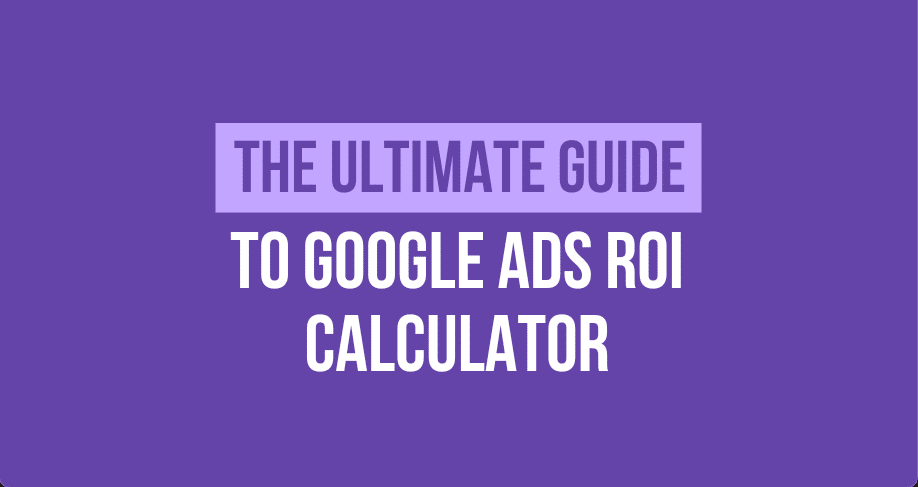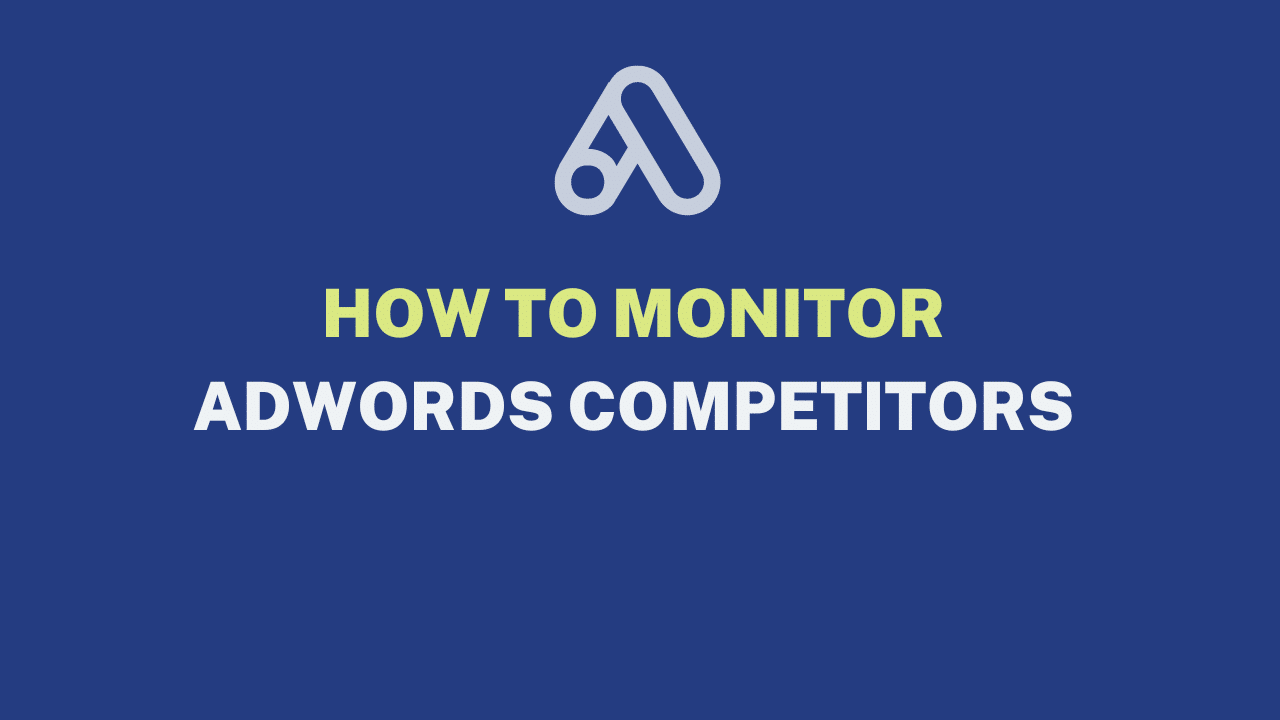Google Ads is an excellent platform to promote your business and products. Google Ads Network Display can potentially increase the reach to your target audience and impulse your marketing to a new level.
Driving Google Ads Campaigns to meet your marketing goals is almost a science, and tracking the total costs of your campaigns and general advertising costs is fundamental to measuring and enhancing your strategies.
If you are ready to gain total control of your Google Ads costs, our blog post is for you. We will provide valuable insights on the importance of the Google ads ROI calculator and help you learn to run the process yourself.
Before diving into the core subject, a quick stop into some background info will give some context on how important ROI calculation is for the successful management of ad campaigns.
Some Background Info
ROI stands for return on investment. That is to say, ROI reflects the amount of money earned by your google ad campaigns. Identifying the campaigns generating the best return on investment is critical to guarantee the best use of your Google Ads Budget and invest in the Google ads campaign that has the best return on ad spend.
Disregarding the objectives of your campaign (generating leads, driving sales, increasing customer base), calculating your return on investment is crucial to ensure that every dollar spent is a dollar with the potential to generate more money.
Why ROI Is the Most Important Metric in Google Ads
If you do not integrate the proper tools into your backend, you’ll never know where your sales are coming from.
Let us put it this way, if you do not have good monitoring strategies, trying to determine if a customer came to your site as a lead from an organic search result or through paid advertisement, it’s difficult and a waste of resources.
That is the fundamental reason behind the importance of tracking your return on investment (ROI).
A general comparison of profit margins and advertising costs does not provide accurate information. This gap can be the difference between a high performing and a poor-performing ad.
Monitor your information constantly and efficiently and convert your advertising spend into a positive ROI on your revenue.
What to Consider to Measure Your Google Ads ROI
To accurately calculate the ROI on your Google Ads Campaigns, you have to consider all the expenses associated with running your campaign, including:
Ad Spend
It is the total amount you invest in your Google Ads campaign. It is a core element when calculating the return on the investment in your Google Ads or any other ads campaign because it impacts the overall profitability of your campaign.
Ad Management Fees
If you run your ads campaign with a third-party service provider, include these expenses in your calculations. If you are running your campaign yourself, consider all the costs associated. Generally, it is harder to identify the oncosts of running the Google Ads Campaign yourself.
Costs of the Goods Sold
If you sell physical products, you have to take the total amount invested in the production into your calculations. Carefully identify all the costs associated with manufacturing the product, and include them in your calculations.
Overhead Cost
They are all the ongoing expenses related to running your business that is not directly related to your service offer and production.
The costs are fundamental to running your business and include rent, insurance, maintenance, accounting fees, office supplies, salaries, and benefits for your personal as well as other related expenses.
How to Calculate ROI in Google Ads Campaigns
Calculating the ROI for Google Ads campaigns involves measuring the revenue generated from the campaign and comparing it to the cost of the campaign. The steps for your successful calculation are the following.
Determine the Revenue Generated by the Campaign
The first step is to identify the conversions from your ads campaign. To do it, set up conversion tracking in Google Ads or import your conversion data from Google Analytics.
Once you identify the conversions, multiply the total conversions number by the average order value or the average conversion value to determine the revenue generated by the campaign.
Calculate the Cost of the Campaign
To determine the cost of the campaign, add up all the costs associated with the campaign, including the cost of clicks, ad spend, and any other expenses, like creative development or agency fees.
Calculate the ROI
Once you determine the campaign revenue and Asds Campaign cost, you can calculate the ROI by subtracting the campaign cost from the revenue and dividing the result by the campaign cost.
The formula for calculating ROI is ROI = (Revenue – Cost) / Cost.
For example, if a Google Ads campaign generated $10,000 in revenue and cost $5,000, the ROI would be calculated as follows:
ROI = ($10,000 – $5,000) / $5,000
ROI = $5,000 / $5,000
ROI = 1 or 100%
In this example, the ROI of the Google Ads campaign is 100%, meaning that the business earned a dollar in revenue for every dollar spent on the campaign.
Interpret the ROI
Once you have the ROI, it’s essential to interpret the result to understand campaign profitability. ROI of 100% means that the campaign has broken even, and the revenue generated is equal to the cost of the campaign.
An ROI above 100% indicates that the campaign has been profitable and the revenue generated is higher than the cost of the campaign.
On the other hand, an ROI below 100% means that the campaign has been unprofitable and the revenue generated is lower than the cost of the campaign.
Use ROI to Optimize the Campaign
Use the information to optimize the campaign. If the ROI is high, you can increase the campaign budget or expand the reach to generate more revenue. If the ROI is low, you can adjust the targeting, bidding, or ad copy to improve the performance of the campaign
FAQs
What Is a Good ROI for a Marketing Campaign?
It is a tricky question because the answer depends on multiple factors, like the type of campaign, the platform, the industry, and the strategy (channels) to display your campaign.
As a general rule, you can apply a 5:1 ratio. It means that for every dollar spent on the campaign, the business generates five dollars in revenue.
Note that the concept of a good ROI is broad and varies depending on campaign goals and the specific industry. Be realistic about your expectations and benchmark against similar campaigns in the same industry.
What is ROAS (Return on Ad Spend) V ROI (Return on Investment) in Google Ads?
ROAS (Return on Ad Spend) and ROI (Return on Investment) are two metrics used to measure the effectiveness of advertising campaigns in Google Ads. While they are similar in concept, they have different meanings and applications
ROAS measures the revenue an advertising campaign generates concerning the amount spent on it. To calculate it, divide the revenue generated by the ad campaign by the amount spent on the campaign. ROAS typically expresses as a ratio or percentage.
ROI, on the other hand, measures the overall profitability of an investment, including all costs and revenue. In the context of Google Ads, ROI would consider the cost of the ad campaign and any other costs associated with the product or service being advertised, such as production and shipping costs.
Calculate ROI by subtracting the cost of the investment from the revenue generated by the investment, and then dividing that number by the price of the investment. Like ROAS, ROI is typically expressed as a ratio or percentage.
Is Google Ads Profitable?
Google Ads can be profitable for businesses when used effectively. However, it is essential to note that the profitability of Google Ads campaigns depends on a variety of factors, such as the industry, target audience, ad targeting, ad creative, bidding strategy, and budget.
To make Google Ads profitable, businesses must develop a well-planned strategy that includes identifying their target audience, setting clear objectives, selecting the right keywords, creating engaging ad copy, and optimizing their campaigns regularly. Additionally, businesses should track and analyze their performance metrics such as cost-per-click, click-through rate, conversion rate, and ROAS to measure the effectiveness of their campaigns and make data-driven decisions.
Closing Thoughts
Google Ads is profitable if businesses use it wisely and monitor the total cost to accurately manage and take advantage of their total marketing budget. There is no sense in investing money in a strategy that is not generating money, and the Google ads ROI calculator is your best ally to have a clear view of the inside of your Google Ads Campaign.
The best way to have a realistic figure on the performance of your campaigns is by doing the calculations based on the reality of your business, automatic calculators oftentimes miss essential information and give you inaccurate results. We hope you find value in today’s post and our tips and insights on Google Adds ROI calculation. Thanks for reading!





